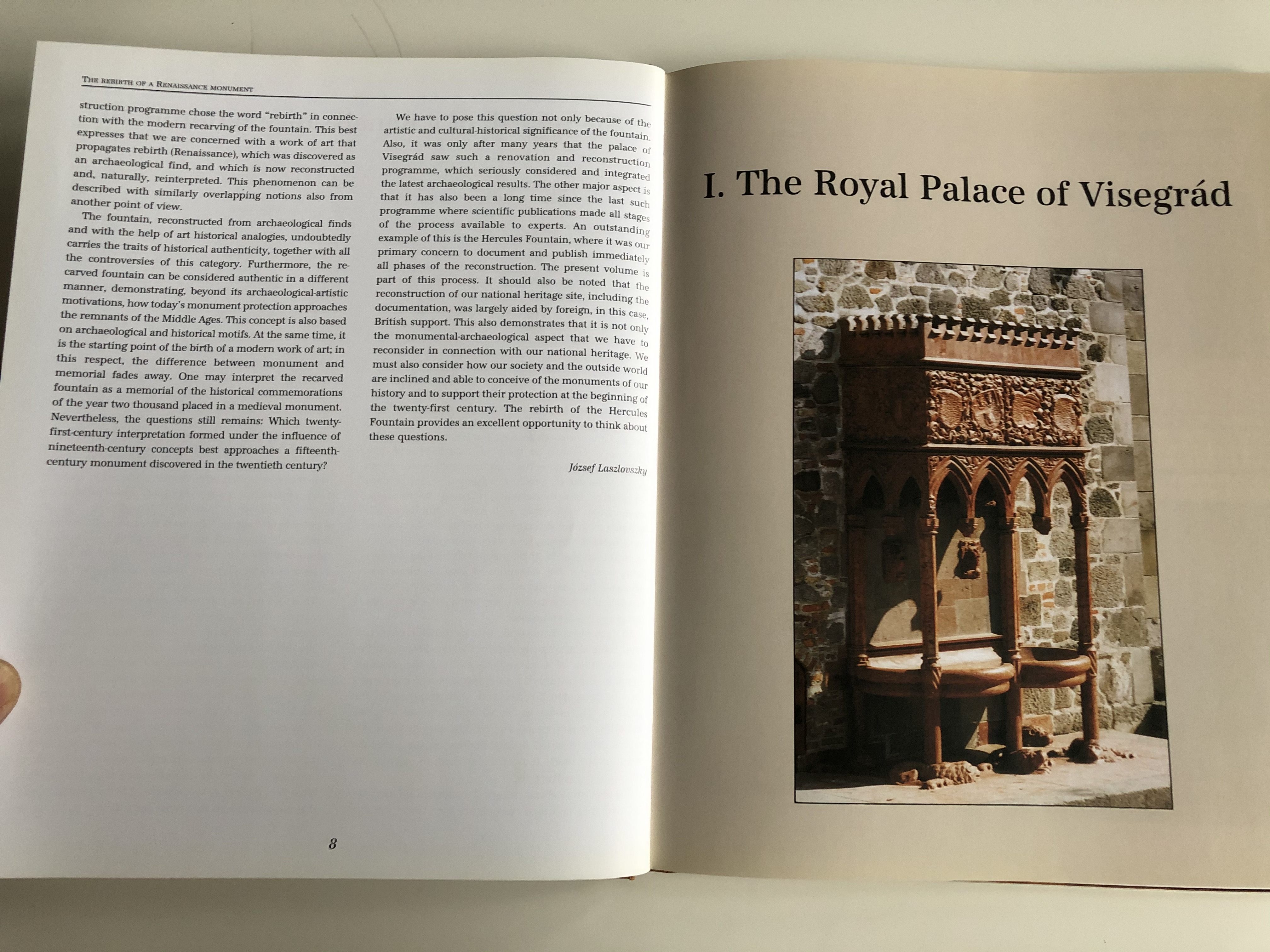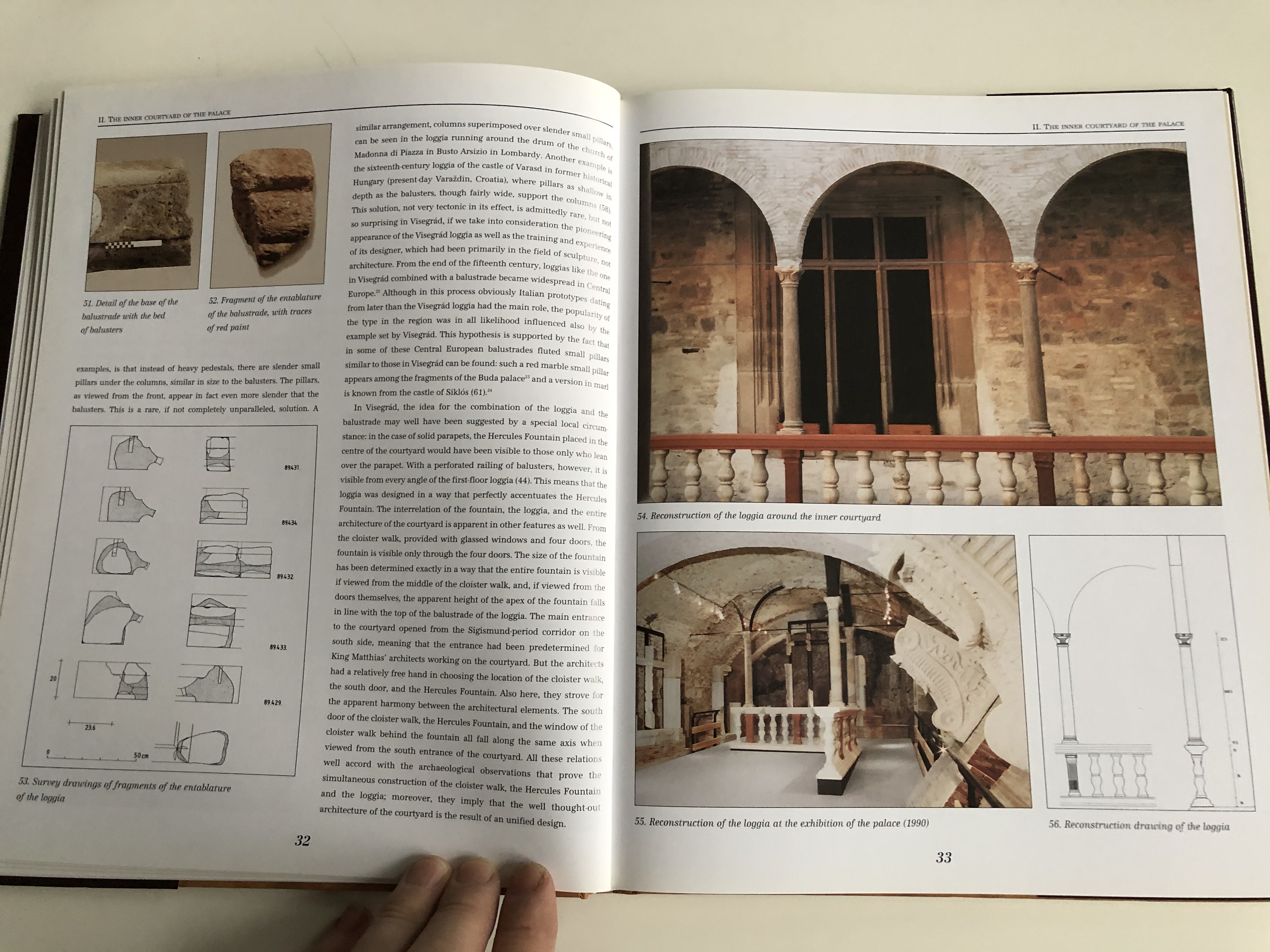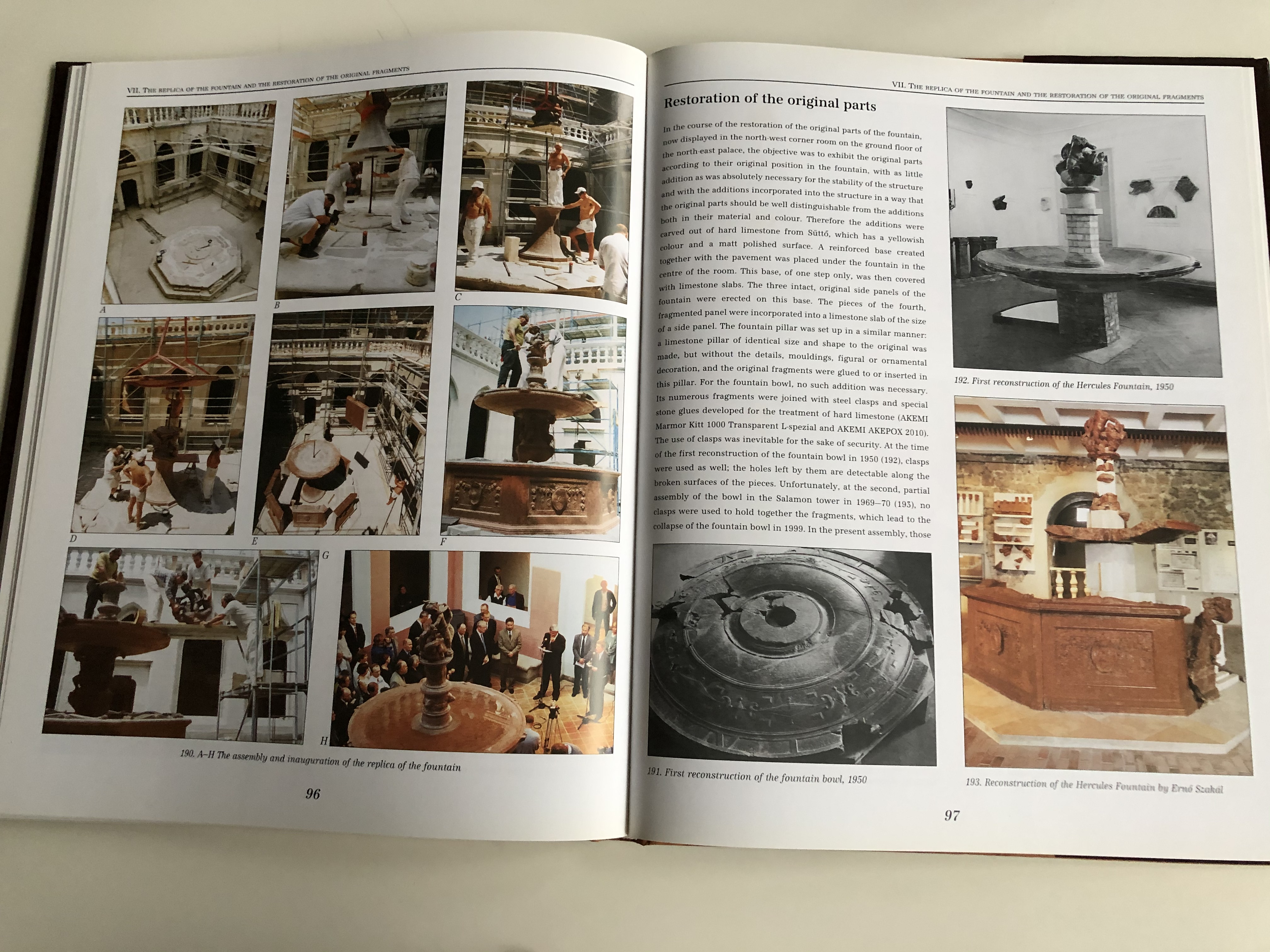Description
The Hercules Fountain of Giovanni Dalmata in the Royal Palace of Visegrád – Gergely Buzás
An Architectural and Artistic Masterpiece | TKM Association & King Matthias Museum, 2001 | English Edition
Product Details | Termékadatok
- Title | Cím: The Hercules Fountain of Giovanni Dalmata in the Royal Palace of Visegrád
- Original Title | Eredeti cím: Giovanni Dalmata Herkules-kútja a visegrádi királyi palotában
- Author | Szerző: Gergely Buzás
- Translated by | Fordította: Dóra Sallay
- Publication Year | Kiadás éve: 2001
- Publisher | Kiadó: TKM Association & King Matthias Museum
- Number of Pages | Oldalszám: 107
- Language | Nyelv: English (Angol)
- ISBN-10: 9635545363
- ISBN-13: 9789635545360
- Format | Formátum: Hardcover (Keménytáblás)
Overview | Áttekintés
This richly illustrated book presents the Hercules Fountain, one of the finest surviving examples of Renaissance architecture in Hungary. Created by the renowned sculptor Giovanni Dalmata, this masterpiece adorned the Royal Palace of Visegrád during the reign of King Matthias Corvinus (1458–1490). The book explores the artistic and historical significance of the fountain, shedding light on its symbolism, craftsmanship, and the cultural influences that shaped it.
Ez a gazdagon illusztrált könyv bemutatja a Herkules-kutat, amely a reneszánsz építészet egyik legszebb fennmaradt példája Magyarországon. A híres szobrász, Giovanni Dalmata alkotása a visegrádi királyi palotát díszítette Mátyás király uralkodása alatt (1458–1490). A könyv feltárja a kút művészeti és történelmi jelentőségét, rávilágítva szimbolikájára, mestermunkájára és azokra a kulturális hatásokra, amelyek formálták.
The historical context of the fountain is thoroughly examined, placing it within the framework of Matthias Corvinus' Renaissance court and the influence of Italian art in Hungary. The study also discusses the restoration efforts and the role the fountain played in shaping Hungarian architectural heritage.
A könyv részletes történelmi kontextusban vizsgálja a kutat, elhelyezve azt Mátyás király reneszánsz udvarának és az olasz művészet magyarországi hatásának összefüggésében. A kutatás kitér a helyreállítási munkálatokra és arra, hogy a kút milyen szerepet játszott a magyar építészeti örökség formálásában.
With detailed analysis, archival sources, and high-quality photographs, this book is an essential resource for art historians, researchers, and those passionate about Renaissance Hungary.
Részletes elemzésekkel, levéltári forrásokkal és kiváló minőségű fényképekkel ez a könyv nélkülözhetetlen forrás a művészettörténészek, kutatók és a reneszánsz Magyarország iránt érdeklődők számára.
Interesting Facts | Érdekes Tények
Giovanni Dalmata, an esteemed sculptor of Dalmatian origin, worked on some of the most prominent Renaissance projects in Hungary and Italy.
Giovanni Dalmata, a dalmát származású híres szobrász, a reneszánsz legjelentősebb projektjein dolgozott Magyarországon és Olaszországban.
The Hercules Fountain is one of the finest surviving pieces of Renaissance sculpture in Central Europe.
A Herkules-kút Közép-Európa egyik legszebb fennmaradt reneszánsz szobrászati alkotása.
The fountain's iconography reflects the power and ideals of King Matthias Corvinus, one of the most influential rulers of the late Middle Ages.
A kút ikonográfiája Mátyás király hatalmát és eszméit tükrözi, aki a késő középkor egyik legmeghatározóbb uralkodója volt.
The book explores the restoration and conservation of the fountain, detailing its historical reconstructions.
A könyv bemutatja a kút restaurálását és megőrzését, részletezve annak történelmi rekonstrukcióit.
Publisher | Kiadó
Published by TKM Association & King Matthias Museum in 2001.
A könyvet a TKM Egyesület és a Mátyás Király Múzeum adta ki 2001-ben.
If you are interested in Hungarian Renaissance art and architecture, this book is a must-have! Share your thoughts to help others make an informed decision!
Ha érdekli a magyar reneszánsz művészet és építészet, ez a könyv kihagyhatatlan! Ossza meg véleményét, hogy mások is tájékozott döntést hozhassanak!
Hashtags | Hashtag-ek
#HerculesFountain #GiovanniDalmata #RenaissanceArt #KingMatthias #VisegradPalace #HungarianHistory #Művészettörténet #MátyásKirály #VisegrádiPalota #ReneszánszMűvészet #ArtHistory #HistoricalArchitecture #FountainDesign #CulturalHeritage #TKM #KingMatthiasMuseum




















































![Guide to The Palace Museum / Painter's Tourist Map of Beijing [Map] Guide to The Palace Museum / Painter's Tourist Map of Beijing [Map]](https://cdn11.bigcommerce.com/s-62bdpkt7pb/images/stencil/600x600/products/2476/4326/1__89417.1462823227.JPG?c=2)

